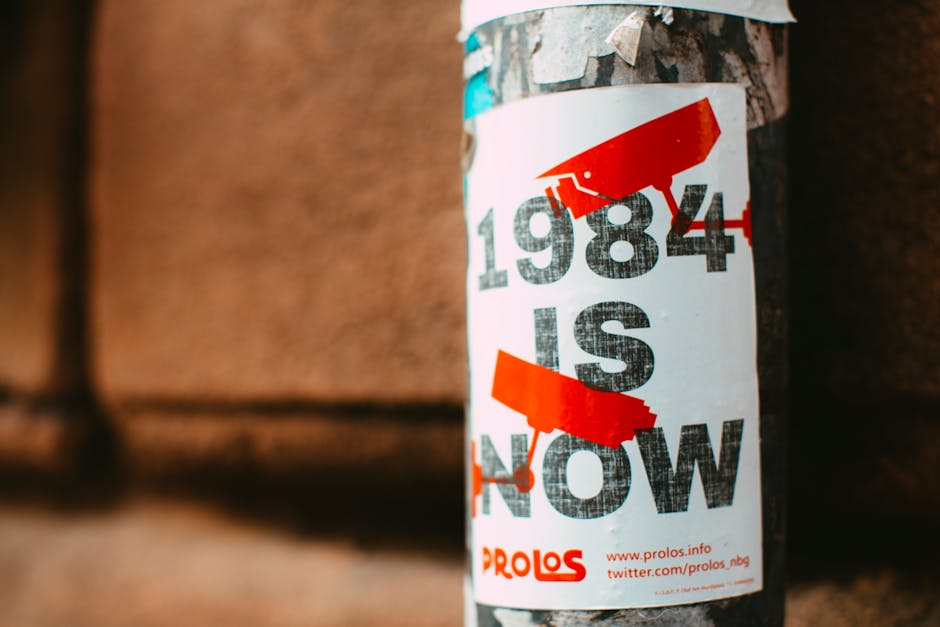Meta Ads & Google Ads are the twin titans of the digital advertising world, and mastering them is crucial for any business seeking online visibility and growth in 2025. Understanding their strengths, weaknesses, and evolving landscapes is paramount for crafting effective marketing strategies. This article delves into the core aspects of Meta Ads & Google Ads, providing actionable insights and future-proof strategies to help you dominate the advertising arena in the coming year.
Understanding the Core Differences: Meta Ads vs. Google Ads
Meta Ads & Google Ads, while both powerful advertising platforms, operate on fundamentally different principles. Understanding these differences is crucial for selecting the right platform or strategically combining them for optimal results.
Intent vs. Interest: The Key Distinctions
Google Ads primarily targets users based on their search intent. When someone actively searches for a specific product or service on Google, your ad has the potential to appear. This “intent-based” advertising captures users already in the buying process.
Meta Ads, on the other hand, leverages the wealth of user data available on Facebook and Instagram to target users based on their interests, demographics, and behaviors. This “interest-based” advertising allows you to reach users who may not be actively searching for your product but are likely to be interested in it.
Audience Reach and Targeting Capabilities
Google Ads boasts an expansive reach across the Google Search Network and its partner websites. Its strength lies in capturing high-intent users actively seeking specific solutions.
Meta Ads, with its massive user base on Facebook and Instagram, offers unparalleled targeting capabilities. You can target users based on incredibly granular data points, including demographics, interests, behaviors, and even life events. For instance, consider the impact of personalized ads based on life events, as explained in this Wikipedia article about behavioral targeting.
Meta Ads in 2025: Trends and Best Practices
Meta Ads is constantly evolving, with new features and trends shaping the advertising landscape. Staying ahead of the curve is essential for maximizing your ROI.
The Rise of AI-Powered Advertising
Artificial intelligence (AI) is playing an increasingly significant role in Meta Ads. AI-powered tools are automating ad creation, optimization, and targeting, making it easier for advertisers to achieve better results. Embrace automated ad placements and audience suggestions to leverage the power of AI.
Short-Form Video Dominance
Short-form video content continues to reign supreme on Meta platforms. Create engaging and attention-grabbing video ads that are optimized for mobile viewing. Reels and Stories are prime real estate for capturing user attention.
Personalization and Privacy Considerations
Users are demanding more personalized experiences, but they are also increasingly concerned about their privacy. Strike a balance between personalization and privacy by using first-party data responsibly and transparently. Offer users control over their data and ad preferences.
Augmented Reality (AR) Experiences
Augmented reality (AR) is transforming the way users interact with brands on Meta platforms. Explore AR ad formats that allow users to virtually try on products or experience your brand in an immersive way. AR can significantly boost engagement and conversions.
For example, a makeup brand could allow users to virtually “try on” different shades of lipstick using an AR filter. Or, a furniture retailer could allow users to visualize how a piece of furniture would look in their home using AR.
Google Ads in 2025: Maximizing Search Engine Visibility
Google Ads remains a cornerstone of digital marketing, and staying abreast of its latest updates and best practices is crucial for achieving top search engine rankings.
The Evolving Role of Keywords
While keywords are still important, Google is increasingly focusing on user intent and context. Broad match keywords and smart bidding strategies are becoming more effective. Focus on understanding the underlying needs and motivations of your target audience.
Leveraging Google’s AI and Machine Learning
Google’s AI and machine learning algorithms are continuously improving ad targeting and optimization. Embrace automated bidding strategies like Target CPA and Target ROAS to let Google’s AI work its magic.
The Importance of Quality Score
Quality Score remains a critical factor in determining ad rank and cost. Ensure your ads are relevant to your keywords, your landing pages are optimized for user experience, and your expected click-through rate is high.
Voice Search Optimization
With the growing popularity of voice search, optimizing your ads for voice queries is essential. Use long-tail keywords and conversational language in your ad copy. Consider the different ways people ask questions using voice search.
Synergizing Meta Ads & Google Ads: A Holistic Approach
The most effective advertising strategies often involve a synergistic combination of Meta Ads & Google Ads. By integrating these two platforms, you can reach a wider audience and maximize your overall marketing impact. A holistic approach is key to success.
Retargeting Strategies
Use Meta Ads to retarget users who have previously interacted with your website or Google Ads. Show them relevant ads based on their past behavior and interests. Retargeting can significantly increase conversion rates.
Cross-Platform Data Integration
Integrate your data from Meta Ads and Google Ads to gain a comprehensive understanding of your customer journey. This will allow you to optimize your campaigns across both platforms and create more personalized experiences.
Building Brand Awareness
Use Meta Ads to build brand awareness and reach a broader audience, then use Google Ads to capture high-intent users who are actively searching for your products or services. This combination can create a powerful funnel for driving sales.
A Real-World Example
Imagine a new organic skincare company. They could use Meta Ads to target users interested in organic beauty, sustainable living, and skincare. The ads could showcase their brand story, values, and product benefits. Then, they could use Google Ads to target users searching for specific skincare products, such as “organic face moisturizer” or “natural acne treatment.” By combining these two platforms, the company can build brand awareness, generate leads, and drive sales. To amplify their reach and visibility even further, they might partner with a Miami SEO Agency to optimize their website and content for search engines, ensuring a consistent and powerful online presence.
Practical Tips for Success in 2025
To thrive in the competitive advertising landscape of 2025, consider these actionable tips:
- Continuously Monitor and Analyze: Regularly track your campaign performance and make data-driven adjustments.
- A/B Test Everything: Experiment with different ad creatives, targeting options, and bidding strategies.
- Stay Updated: Keep abreast of the latest platform updates and best practices.
- Focus on Mobile Optimization: Ensure your ads and landing pages are optimized for mobile devices.
- Invest in High-Quality Content: Create engaging and valuable content that resonates with your target audience.
Future-Proofing Your Advertising Strategy
The digital advertising landscape is constantly evolving. To stay ahead of the curve, consider these future-proofing strategies:
- Embrace Automation: Leverage AI-powered tools and automation features to streamline your campaigns.
- Focus on First-Party Data: Collect and utilize first-party data responsibly to personalize your ads.
- Diversify Your Channels: Don’t rely solely on Meta Ads & Google Ads. Explore other platforms and channels to reach a wider audience.
- Invest in Training: Continuously invest in training and development for your marketing team.
- Adapt and Evolve: Be prepared to adapt your strategies as the advertising landscape changes. As noted in this article from The New York Times about the future of digital advertising, flexibility is key.
FAQ about Meta Ads & Google Ads
What is the ideal budget for Meta Ads & Google Ads campaigns?
The ideal budget for Meta Ads & Google Ads campaigns depends on several factors, including your industry, target audience, and marketing goals. Start with a small budget and gradually increase it as you see results. Continuously monitor your ROI to ensure you’re getting the most out of your investment.
Which platform is better for brand awareness: Meta Ads or Google Ads?
Meta Ads is generally better for building brand awareness due to its interest-based targeting and vast reach. You can use engaging visuals and videos to capture user attention and introduce them to your brand. Google Ads is more effective for capturing users who are already searching for your products or services.
How can I improve my Quality Score in Google Ads?
To improve your Quality Score in Google Ads, focus on three key areas: ad relevance, landing page experience, and expected click-through rate. Ensure your ads are highly relevant to your keywords, your landing pages are optimized for user experience, and your ad copy is compelling and engaging.
What are the key differences between broad match and exact match keywords in Google Ads?
Broad match keywords allow your ads to show for a wider range of searches, including synonyms and related terms. Exact match keywords restrict your ads to only show for searches that are an exact match to your keyword or close variants. Broad match keywords can help you reach a wider audience, while exact match keywords can provide more control over your ad spend and targeting.
How can I track the success of my Meta Ads & Google Ads campaigns?
You can track the success of your Meta Ads & Google Ads campaigns by using the built-in analytics tools provided by each platform. Monitor key metrics such as impressions, clicks, conversions, and cost per acquisition (CPA). Use this data to optimize your campaigns and improve your ROI.
Conclusion
Meta Ads & Google Ads will continue to be indispensable tools for businesses seeking online success in 2025. By understanding their unique strengths, staying abreast of the latest trends, and adopting a synergistic approach, you can harness their power to achieve your marketing goals. Embrace automation, prioritize personalization, and never stop testing and optimizing. The future of digital advertising is bright, and with the right strategies, you can thrive in this dynamic landscape.

